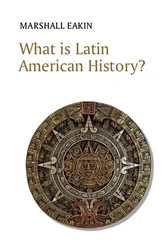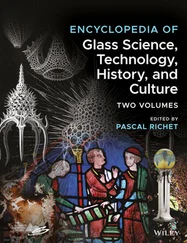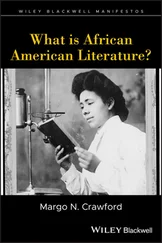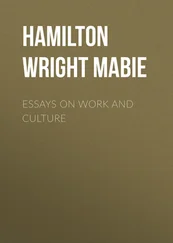The theorization of these deep processes of colonization has led to the development of one of the most influential concepts we have seen arise in the last 30 years. Colonial semiosis has been absorbed and/or subsumed under the “coloniality of power,” a concept first developed by Anibal Quijano in Peru – not in France or England – and later expanded and further theorized by Walter Mignolo. Quijano stresses the conflict of knowledge and structures of power implicit in his term the “coloniality of power” as he developed it from the perspective of a subject living not at center of modernity but rather experiencing and assessing the epistemological hold of colonialism over the people ruled by empires. Writing in his Coloniality, Subaltern Knowledges and Border Thinking (2000), Mignolo explains that in the “classification and reclassification of the planet’s population” – the sine qua non of the coloniality of power – “the concept of culture becomes crucial” (17). As Quijano points out, institutional structures become necessary to manage the classifications, distinctions, and hierarchies that organize the modern/colonial system. A powerful deployment of the knowledges sustains both the established order as well as the institutions that hold up its unassailable legitimacy. Most important within this matrix is the development of an epistemological perspective from which to constantly articulate the meaning and shape of the grid of power from which the production of knowledge is to emerge in order to maintain the coloniality of power in the hands of its managers (Mignolo 2000, 17). It is significant to stress here that the coloniality of power constitutes an analysis carried out outside the boundaries of any given discipline. Its analytic perspective was first put forth by Jose Carlos Mariátegui, a Gramscian intellectual concerned with understanding the clutch of coloniality in postcolonial Peru and, by extension, Latin America. He lived his short life far from the academic centers in the United States or Europe. Mariátegui labored every day immersed in the granular reality of the local and widely open to the possible meaning of world history and the forces that sustained the grip of the colonial domination in the clothing of modernity. However, neither Mariátegui nor Quijano could be said to work outside and beyond the broad and multiple umbrella of Western thinking, precisely because of the pervasive reach of the deep coloniality experienced in Latin America.
Rather, Quijano, Mariátegui, and many other trail-blazing Latin American intellectuals and artists should be thought to work from what Borges, in his “ El escritor argentina y la tradicion ” (1932, Obras completas 1972), posits as the web of thinking within which or against which, or beyond which, a Latin American intellectual operates. That is to say, the whole of Western tradition with special emphasis on its traditions of critical thinking, or thinking irreverently . Borges begins to make his point by asking: “ Cual es la tradicion argentina? ” (272). He replies by making a claim not for local traditions alone and not for the classical canon but rather for the whole world’s traditions taken, seen, and transformed from an irreverent perspective. The key is the irreverence as against any kind of orthodoxy. Taking the case of the Irish writers who write in English and in doing so transform the language and the traditions as an example of what he has in mind by “irreverence,” Borges states: “ Creo que nuestra tradicion es toda la cultura occidental, y creo tambien que tenemos derecho a esta tradicion, mayor que el que pueden tener los habitants de una u otra nacion occidental . . . Creo que los argentinos, los sudamericanos en general, estamos en una situacion analoga [a la de los irlandeses en relacion a la tradicion inglesa]. Podemos manejar todos los temas europeos, manejarlos sin superticiones, con una irreverencia que puede tener, y ya tiene consecuencias afortunadas ” (272–273). In closing the essay, Borges once again claims the whole universe as the patrimonio (heritage) for Latin American intellectuals who should thus not fear the future but rather march forth confidently and try out all topics and modalities irreverently . It is this irreverence practiced at the edge of empire that accounts for the originality and accuracy of the theses involved in the concept of the coloniality of power. To some extent, the first edition of the Companion bears witness to the impact and influence the “coloniality of power” had on many a discipline in the social sciences and humanities.
Given that nothing ever stays the same, or is subject for very long to the same set of influences and innovations, it goes without saying that the tenuously integrated and multifaceted field of “Latin American Studies,” as different from “Latin America” itself, would be, at the same time, open to theoretical developments stemming from various epistemological locations. In fact, “Latin American Studies” comprises many disciplines which more often than not do not dovetail as an inquiry developed under similar or compatible methodologies, perspectives, or set of assumptions. Fractures, contradictions, incoherencies, urgencies, and directions vary enormously from one discipline to the next. Even though one may be able to say that there was/is a linguistic turn or a cultural studies turn in history, or a visual studies turn in anthropology and gender studies appear everywhere, the scholarship in each of those fields of inquiry encompasses questions and answers set within the paradigm of its own. Nevertheless, the institutions that the coloniality of power necessitates to manage knowledge – fellowships, conferences, scholarly journals, university presses, course curricula at university-level instruction, and hiring of teachers and professors—have in the first quarter of this century produced a great deal of scholarship under the aegis of cultural studies, postcolonial studies, queer theory, various Marxist approaches, and postcritical studies.
The second edition of the Blackwell Companion to Latin American Literature and Culture will appear 15 years after it was first conceptualized and assembled. At the moment, the field of Latin American studies, with its attendant large number of disciplines focusing on the history and the present of the region, was not only vigorous and growing; it was thriving. From archaeology to zoology, the number of students enrolled in courses all over the United States seemed to grow every year. Almost any field, but especially those in the humanities and social sciences, had been affected by postmodern theory in the broadest sense of the term, albeit in different ways and with varied results. It goes without saying that the most profound embrace of postmodern theory, beyond departments of French, took place in English departments, where the study of literature began departing from a focus on individual authors and texts under the impact of Marxist cultural studies. The aperture onto culture and more specifically onto the topics of interest to cultural studies – gender identities, feminism, masculinity, binarism, surveillance, spectacle, intersectionality, plasticity, precarity – affected all the humanities, the social sciences, in ways that can only be considered transformative due to the fact that there occurred a radical shift in the set of assumptions, the perspective, and the methods of study that constructed, identified, and analyzed the new objects of study. The revival of Antonio Gramsci along with the legacy of French theorists such as Michael Foucault, Jacques Derrida, Gilles Deleuze, Luce Irigaray, Michel de Certeau, and Althusser and their readings of Karl Marx cannot be overemphasized in this turn toward culture as text. Concomitant with the rise of postmodern theory and its growth in other influential academic centers such as British universities, the American academy at large, and Australian universities, the last 30 years also witnessed the rise of postcolonial theory.
Читать дальше












